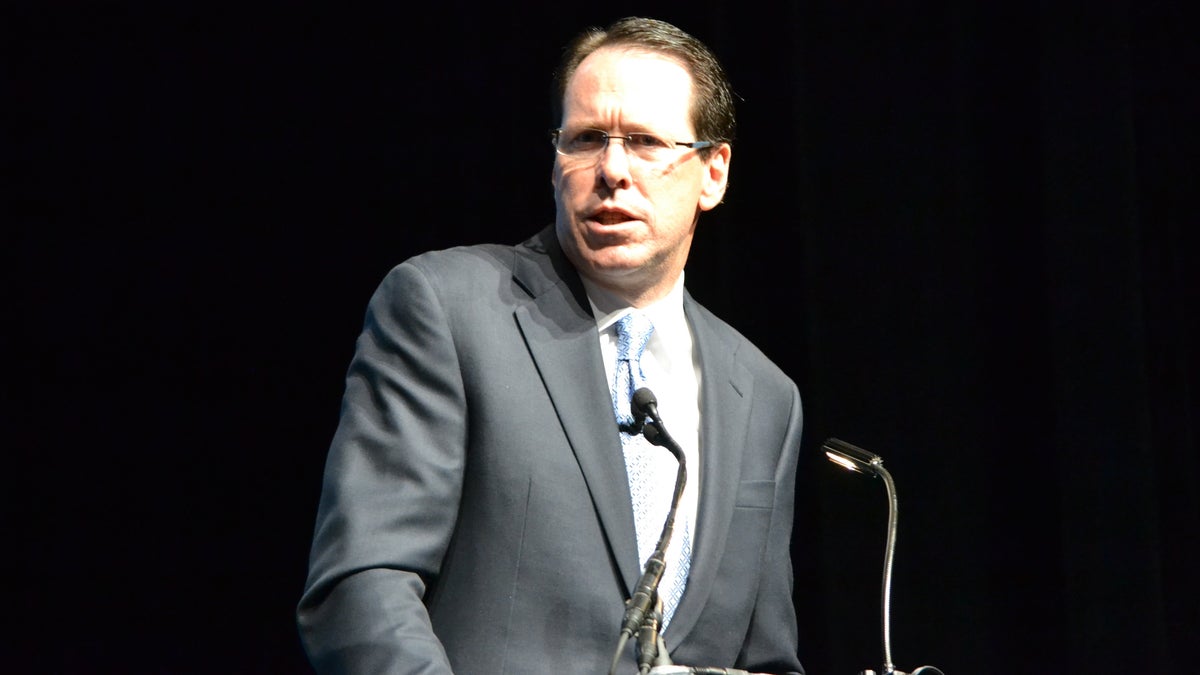AT&T chief: We can't keep doing big subsidies on phones
CEO Randall Stephenson says wireless operators can no longer afford to suck up the costs of customers' devices. The wave of the future? Drive up network use.

AT&T's top executive says the era of big subsidies for devices is coming to an end, as wireless operators can no longer afford to fund a constant smartphone upgrade cycle.
Speaking at an investor conference in New York City on Tuesday, AT&T CEO Randall Stephenson said that with smartphone penetration at over 75 percent and soon reaching 90 percent, wireless operators need to work harder to get customers to use more of the network rather than simply getting on the network.
"When you're growing the business initially, you have to do aggressive device subsidies to get people on the network," he said. "But as you approach 90 percent penetration, you move into maintenance mode. That means more device upgrades. And the model has to change. You can't afford to subsidize devices like that."
Last week, AT&T introduced a new pricing plan that offers an incentive to customers who keep their older phones, allowing them to save $15 a month on their service bill.
AT&T has been on the path toward creating a more balanced pricing structure for the past few years, Stephenson said. AT&T was the first major wireless carrier to eliminate unlimited data plans, replacing them with usage-based service plans. Now, more than 70 percent of AT&T's customers are on plans that charge customers based on consumption.
Stephenson also acknowledged that breaking customers of their habit of upgrading to a new phone every 18 months to two years is not an easy task. But he said a business models focused on financing rather than providing a subsidy would be "transformative" for the industry. He said the company's new AT&T Next program, which offers no-money down and 0-percent financing, drives smartphone penetration in a way that is more sustainable over time.
"If you are a customer and you don't need to upgrade your device, you can get unlimited talk and text and access to the data network for $45 all-in," he said. "You can use your own device or finance it. I think this will be very powerful. It's where we see the market going."
Stephenson said that the change in business model comes as AT&T and other wireless carriers have successfully addressed their network capacity issues and seeded the market with smartphones. Now that the dynamics of the industry have changed, he said wireless operators are able to compete "down market."
Indeed, AT&T is not the first carrier to make this move. T-Mobile USA's "uncarrier" strategy, which did away with carrier subsidized devices entirely, seems to have had an effect on AT&T's thinking. T-Mobile was also the first major nationwide carrier to offer a device finance plan.
Looking toward the lower end
He said that when carriers were capacity constrained, they focused on addressing the high end of the market. But now that more capacity is available thanks to LTE, AT&T can focus on the lower end of the market.
Stephenson also emphasized the importance of AT&T's acquisition of prepaid carrier Leap Wireless to this value strategy. Not only is AT&T getting useful wireless spectrum from Leap, but it's also getting the prepaid brand and platform.
"You will see us go very aggressively in the prepaid market," he said.
In addition to pushing smartphones "down market," Stephenson also sees the connected home and connected car as businesses that will offer significant growth in the next several years. And he said that mobile video will be another important driver of growth.
Stephenson noted that the company's aggressive LTE network upgrade and its focus this past year on acquiring more spectrum will help the company usher in the video era of mobility. And he said he believes the company has plenty of wireless capacity to sustain this growth until the broadcast wireless spectrum auction, which was recently pushed back by the FCC until the middle of 2015.
"The last two years have been a full-court press to shore up our spectrum position up to and through the next auction," he said. "We are shoring up our capacity reserve in anticipation of the next growth wave, which is video. And mobile video requires a lot of spectrum."
The additional network capacity from the new spectrum and from LTE have also helped improve the overall quality of AT&T's network. Not only does AT&T claim to offer the fastest 4G LTE network in the US, but Stephenson also said the company has dramatically improved its call quality, greatly reducing the number of dropped calls. And he said the improved network will play a key roll as AT&T competes in the coming years.
"As we have success with LTE, and we get more efficiencies from LTE, we are adding capacity to the network and also freeing up capacity on our HSPA+ network," he said. "This frees us up to address a new opportunity in going down market."

